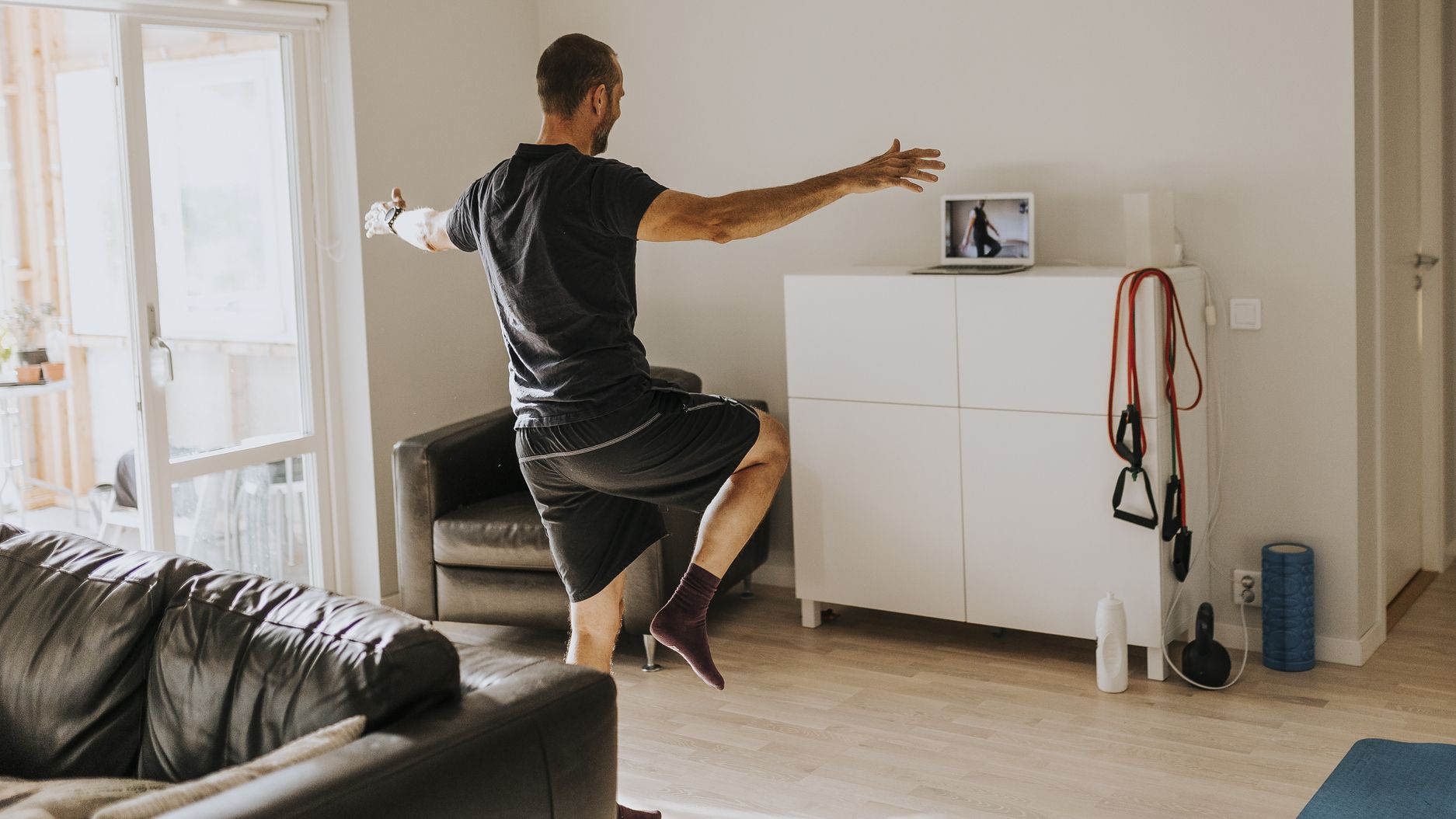A physio shares five of the best daily moves to build balance in midlife
Balance training helps maintain confidence and stability as we age


Our balance is something we often take for granted, but research suggests it may be one of the biggest indicators of long-term health and longevity.
Poor balance in later life has been linked to both serious health conditions as well as an increased risk of falls and injury. A large study published in the British Journal of Sports Medicine in 2022 found that the inability to balance on one leg for 10 seconds in mid to later life was linked to an almost two-fold increased risk of death.
Experts now recommend the so-called flamingo test, in which you assess how long you can stand on each leg, as a relatively simple way to check in on your own balance from home.
Balance can start to decline from as early as our 40s, according to Laura Wilson, specialist musculoskeletal physiotherapist and director of The Swiss Touch Physiotherapy. “Mainly because we stop challenging it,” says Wilson. “We sit more, move less unpredictably, and lose the small daily stimuli that keep our reflexes active.
“As we move through midlife, subtle physiological changes start to affect our balance. We naturally lose muscle strength and joint mobility often decreases, especially through the ankles and thoracic spine. At the same time, our sensory systems, vision and proprioception (the body’s internal sense of position) start to become less responsive, so the body receives slower feedback about where it is in space.”
The sooner you start incorporating regular balance work into your routine, the better. “The good news is that balance is highly trainable and improves quickly once you start working on it,” Wilson tells Fit&Well. “Regular balance training helps to offset these changes by strengthening stabilising muscles, improving postural control and keeping the mind-body connection strong. It’s one of the simplest ways to maintain confidence and stability as we age.”
Just a few minutes a day of targeted movement can make a real difference, she adds. “The nervous system adapts fast and with consistent exercise, your coordination and overall stability can improve within weeks.”
Start your week with achievable workout ideas, health tips and wellbeing advice in your inbox.
With this in mind, Wilson has recommended five of the best moves to practice daily to improve your balance in middle age.
1. Single-leg stand with arm reach

- Stand tall and lift one foot off the floor.
- Reach one arm forward, then overhead, keeping your hips level.
- Hold for 10–20 seconds on each side.
“This exercise is excellent for improving proprioceptive feedback, from the foot and ankle, while strengthening deep stabilising muscles around the hip and core,” says Wilson. “The reaching motion challenges dynamic postural control, which is important for maintaining balance during real-life movements.”
2. Tip-toe walking

- Rise up onto the balls of your feet.
- Walk forward slowly for 10–15 steps.
- Keep your heels lifted and your posture tall.
“This is a great exercise to strengthen the intrinsic foot muscles, calves and ankle muscles, which are the foundation of balance,” says Wilson. “Walking on the balls of your feet increases the demand on your proprioceptive system, improving control of the ankle complex and improving your coordination between the lower limb and core.
“This is particularly beneficial in midlife, when ankle stiffness and reduced sensory feedback can compromise stability.”
3. Standing cross-body reach

- Lift your right knee and reach your left hand across to touch it, then switch sides
- Continue slowly for 30-60 seconds.
“This is an excellent exercise to help engage your oblique and deep core muscles to resist unwanted trunk rotation,” says Wilson. “This will improve your neuromuscular coordination between the upper and lower body, which enhances your balance during multi-directional movements.”
4. Single-leg Romanian deadlift
- From standing, hinge forward at your hips, raising one leg behind you, keeping your back straight.
- Push your hips forward to return to standing with control.
- Start with 2 sets of 8 reps, and build up over subsequent workouts to 3 sets of 12 reps.
“This is one of my favourite exercises, as it provides so many benefits,” says Wilson. “It strengthens the entire posterior chain, including the glutes, hamstrings and spinal extensors, whilst challenging pelvic stability. It’s a key movement for improving the body’s ability to maintain optimal pelvic alignment, which plays an important role in balance and coordination.”
5. Reverse lunge with knee drive
- Stand with your feet hip-width apart, then take a big step back with your left foot and bend both knees to lower until your left knee is just above the floor.
- Push through your right foot to stand up and bring your left knee forward to hip height.
- Pause, then go straight into the next rep.
- Start with 2 sets of 8 reps, and build up over subsequent workouts to 3 sets of 12 reps.
“While this may feel challenging, this exercise strengthens the gluteal and quadriceps muscles while training eccentric control through the hips and knees,” says Wilson. “The transition from lunge to single-leg stance replicates everyday challenges to balance and improves your postural control.”

Rosie Fitzmaurice is a health, fitness and beauty journalist and editor, writing about issues related to women’s health, nutrition, exercise, longevity, and sex and relationships.
A Pilates and strength training devotee, cold shower and sauna obsessive, with a very specific coffee order, she loves nothing more than putting the latest wellbeing trends to the test and interviewing scientists and experts to debunk common wellness myths.
You must confirm your public display name before commenting
Please logout and then login again, you will then be prompted to enter your display name.
